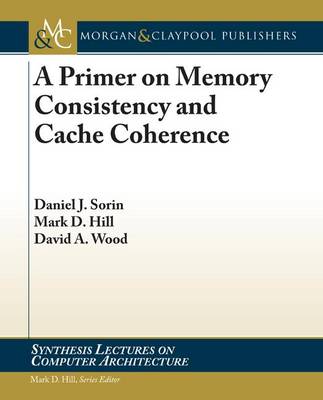Synthesis Lectures on Computer Architecture
2 total works
A Primer on Memory Consistency and Cache Coherence
by Daniel Sorin, Mark Hill, and David Wood
Published 2 March 2011
Many modern computer systems and most multicore chips (chip multiprocessors) support shared memory in hardware. In a shared memory system, each of the processor cores may read and write to a single shared address space. For a shared memory machine, the memory consistency model defines the architecturally visible behavior of its memory system. Consistency definitions provide rules about loads and stores (or memory reads and writes) and how they act upon memory. As part of supporting a memory consistency model, many machines also provide cache coherence protocols that ensure that multiple cached copies of data are kept up-to-date. The goal of this primer is to provide readers with a basic understanding of consistency and coherence. This understanding includes both the issues that must be solved as well as a variety of solutions. We present both high level concepts as well as specific, concrete examples from real-world systems.
For many years, most computer architects have pursued one primary goal: performance. Architects have translated the ever-increasing abundance of ever-faster transistors provided by Moore's law into remarkable increases in performance. Recently, however, the bounty provided by Moore's law has been accompanied by several challenges that have arisen as devices have become smaller, including a decrease in dependability due to physical faults. In this book, we focus on the dependability challenge and the fault tolerance solutions that architects are developing to overcome it. The two main purposes of this book are to explore the key ideas in fault-tolerant computer architecture and to present the current state-of-the-art - over approximately the past 10 years - in academia and industry.

